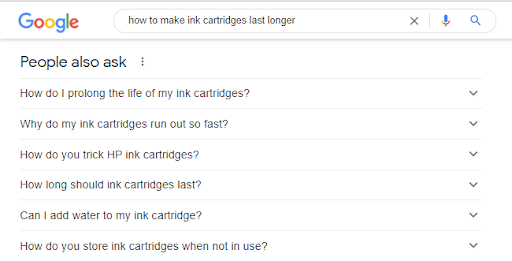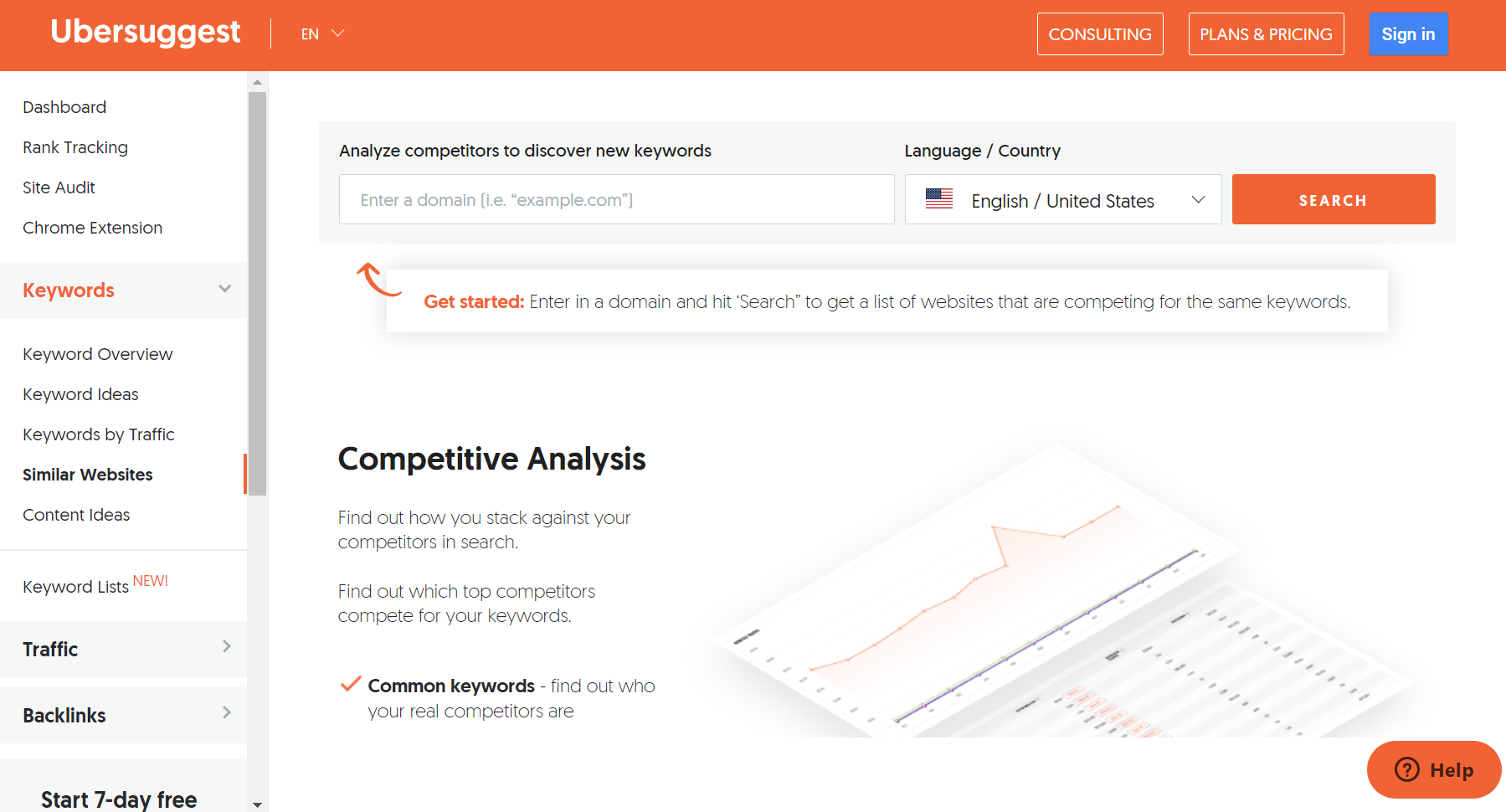Home » Content Marketing » How to Discover What Customers Want to Read on Your Blog

How to Discover What Customers Want to Read on Your Blog
Over 7 million blog posts are published across the internet daily. Every. Single. Day.
Where do you think most of this content goes? You guessed it—right down the drain. All the hours of research, the time you spent writing and editing, all wasted.
Why does this happen? Because your blogging goals aren’t aligned with the needs of your customers.
Furthermore, countless brands are competing for the attention of your readers. And just like you, most of them publish engaging, fun, and timely content.
The secret to standing out is simple: run your blog with intention. Ask yourself, who are you writing for?
By publishing content your customers want to read, you can:
- Create deeper connections between your business and your customers
- Expect a better ROI from your content marketing
- Make your brand an industry authority
- Raise brand awareness
- Generate more leads and increase conversions
Millions of blog posts are never seen or read because they don’t speak to anyone in particular.
Out of thousands of blogs, readers will only choose to read your content if it goes above and beyond the others to solve their problems. So start by discovering what those problems are.
“I am a returning and very happy customer who had the pleasure to work with Natasha and her team. The whole experience was wonderful. Not only they have improved our rankings and we had a very good ROI, but they also made the experience seamless. It’s a turn-key solution. I will definitely keep hiring them again and again.” – Hatem B., LaylasDelicacies
Develop a Buyer Persona
A buyer persona is a semi-fictional profile that reveals your customers’ habits, age range, interests, motivations, what they do from day to day, their level of education, and more.
Essentially, it answers questions like:
- Who are your customers?
- What pain points do they have?
- How can your products or services address their challenges?
- What questions or concerns do they have about your products or services?
You can develop a buyer persona using information from:
- Customer research data
- Google Analytics
- Social media posts
- Direct customer feedback and reviews
- Surveys
- Your blog’s comment section
- Information from website chatbots
Don’t just focus on your target audience. Buyer personas have a wider application because they include a vision of both your existing and potential customers.
They can help you create content that addresses the needs of customers at different levels of the marketing funnel.
And the more information you can get about your readers, the higher your chances of discovering what it is they want to read.
Here’s a fictional example of a buyer persona from Survey Monkey:

Let’s say you own a pet store and would like to sell to Loyal Lola. Consider that:
Lola likes to cook: Write blog posts with pet food recipes she could try.
She’s a parent with three kids: Lola might feel like she’s too busy for pets, so tell her how she can introduce one into her household without disturbing her work-life balance.
Lola works full-time: Tell her about owning a pet when you work full-time.
She likes to attend conferences and take family vacations: How can she plan for pet care while she’s away?
Lola lives in the suburbs: What can she expect when living with pets in the suburbs?
When you know the challenges and goals of your customers, you can tell them how your products will help them achieve their goals and solve their problems—both in their professional and personal lives.
And if your brand is targeting multiple industries, you’ll need to develop a unique buyer persona for each industry.
A middle-aged man who is about to retire is probably reading different blog posts than a teenager who’s about to go to college.
Yet both of them might be your customers.
Finally, knowing the needs, interests, and personality of your ideal buyer also means knowing what they’re likely to search for online.
This is where Google Autofill comes in.
Let’s say you sell printers and you’ve discovered that one of the challenges your customers face is how to make ink cartridges last longer.
Start by looking up that exact statement: how to make ink cartridges last longer.
Google will reveal more customer pain points for you such as:
- How to keep ink cartridges from drying out?
- Does printer ink expire?
- How many times should you refill the ink cartridge?
- How can you tell if your ink cartridge is bad?
- How do you store a printer when it’s not in use?
Remember to keep observing and updating your buyer personas as your business grows.

Source: Google Search
Use Blog Metrics and Google Analytics
You already have a mine of information about what your customers want to read.
This data is available on Google Analytics, on your blog metrics, as well as your email software.
Collected over time, this data creates a feedback loop that provides you with insight into the way your customers interact with your content.
You can learn:
- Which blog posts are the most popular?
- Which newsletters get the most engagement?
- What is the least popular content on your site?
- What type of content are readers searching for on your blog?
Look through at least 3 months of data to get a good understanding of your position and use this information to:
- Refresh old topics that performed well.
- Repurpose newsletter content as blog posts.
- Identify content you shouldn’t cover again.
- Rework blog posts that need punchier headlines or better SEO.
- Elaborate on topics you’ve covered before.
If you have the money, consider purchasing analyst reports for your industry.
Researchers typically interview existing and potential customers and develop in-depth reports that will give you better insight into what your readers are looking for.
This video will provide you with a beginner’s tutorial of Google Analytics:
Ask Your Customers
Your customers know what they want. They also know what your potential customers want, and they’re willing to help you find out.
Engage your readers through:
- Email newsletters
- Customer support calls
- Live chats
- Surveys
- Online forums and groups
- Social media platforms like Quora and Twitter
Or conduct a case study using your best customers, as well as your oldest and newest readers. Select three or four members from each group and give them a call to ask if you can interview them.
During the interview, ask probing questions that begin with ‘why,’ ‘how’ or ‘what.’
“What are their top priorities when they visit your blog?”
“How did they first come to interact with your blog?”
Yes/no questions can be limiting, so try to push the conversation forward with open-ended questions.
“What made them consider your products?”
“What do they consider when making a purchasing decision?”
The goal is to understand the circumstances, personal or professional, that lead the customer to seek a solution on your blog.
You can then create content that addresses these circumstances. It’s always wise to record these calls so you can refer to the information again later.
Research Your Competition
What is your competition doing? And what are they not doing?
Visit a competitor’s blog, open one of their top articles (most blogs highlight their popular posts), and compare it to one of your best blog posts.
Take note of any topics they cover regularly and see what you can do better.
You can analyze your competitor’s blog using tools such as:
- Ubersuggest
- Ahrefs
- SEMrush
With these tools, you can:
- Analyze site traffic on the competition’s blog
- See their most popular and least popular posts
- Identify high ROI keyword opportunities
- Discover the competitor’s SEO ranking
The table below gives you a comparison of the three tools:
| Analyzing Tool | Pros | Cons |
| Ubersuggest |
|
|
| Ahrefs |
|
|
| SEMrush |
|
|
Once you find out what’s working for your competition, don’t just replicate it on your blog. Ask yourself these questions:
- What type of content does your competition publish, and will it work for you?
- Is your competitor’s blog lacking anything?
- How are their engagement levels compared to yours, and what are they doing right (or wrong)?
- How is the quality of their content compared to yours?
Studying your competition can help you refine your own content strategy and write articles your customers actually want to read.

Source: Ubersuggest
Experiement and Track Results
As we’ve said, your customers often know what they want, but it isn’t always the case.
Steve Jobs said it best:
“A lot of times, people don’t know what they want until you show it to them.”
You probably have a list of blog post ideas you want to try out. If you don’t, you can get inspiration from your competitor’s site.
The point is that if you think your customers need a particular solution, you should write about it.
Publish the content on your blog, or distribute the content through an email newsletter and track engagement.
Here are some popular article types you can experiment with:
- Tips on using your brand’s products
- Listicles
- Detailed guides, tutorials, and how-to posts
- Posts about industry news
- Case studies and interviews
You can also find out what’s trending online and work those topics into article ideas your audience will love.
For even more content ideas, use tools such as:
- Google Trends
- Answer The Public
- Exploding Topics
- BuzzSumo

Source: AnswerThePublic
Blog For Your Audience
It’s not enough to create good content if your customers have no use for it.
Discover what your readers want by looking at what appealed to them in the past, researching your competition, experimenting with new article types, or simply asking them.
But what if you don’t have time to do all that?
CopySmiths can help.
Our team of writers and creatives can suggest content ideas, write, and publish high-quality posts for you.
Work with us for content that will drive traffic to your blog.
“I highly recommend CopySmiths to anyone looking for a professional content creation company.”
— Alex S., Lucid Hills Investments
Frequently Asked Questions
Is blogging worth the investment?
Yes. Blogging is one of the surest ways to generate traffic for your business.
How do you know if your blog is getting noticed?
Look at your blog metrics to find out how many people are reading your posts, if they’re sharing them, and how much time they’re spending on the page.
You can also look at the comments to ascertain whether your readers are engaging with your content.
How do you get customers to visit your blog more?
You need to write engaging, relatable, trustworthy, and relevant content. At CopySmiths, we can help with that.
Share on LinkedIn:
CopySmiths
I'm Katrina McKinnon, founder of CopySmiths and Small Revolution. In my 20 years of experience, I have helped online businesses create high-performing content specifically on an eCommerce store's blog. Find me on LinkedIn and Twitter.

CopySmiths offers the best blog writing services for online stores.
If you'd like us to write blog articles for you, click here.
Most Recent
- 3 Bold Questions You Should Ask When Hiring A Content Writer

- 5 Practical Reasons You Should Use a Blog Post Template

- 4 Amazing Benefits of Using a Title Generator for New eCommerce Blogs

- 10 Awesome Bio Examples Your Online Store Blog Should Emulate

- 8 Basic Steps to Successful Content Development Every Time

Podcasts
Got a question?
Ask our friendly team about our article writing services.
Subscribe to CopyZine
Monthly, hand-picked stories of the best in eCommerce Content.





